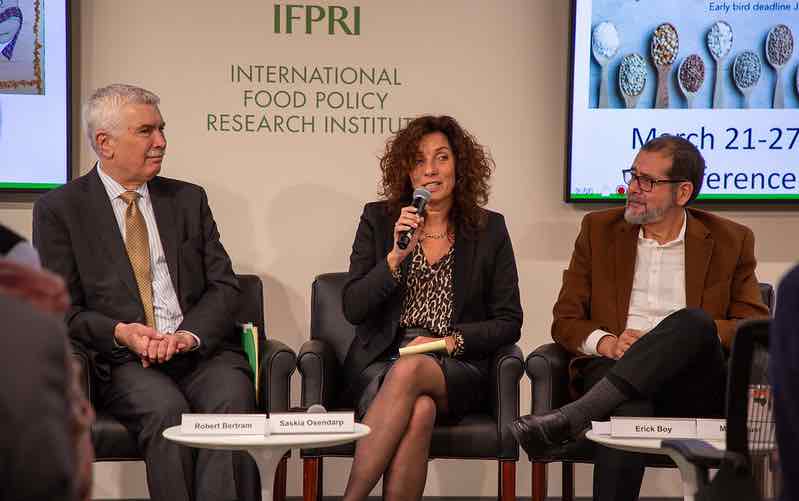Global efforts to improve nutrition require approaches that focus on the entire food system, leading to healthier and sustainable diets for all. Considering how these efforts intersect with issues such as climate change, universal health coverage, and children’s rights is necessary if we want to make serious progress in reducing malnutrition, particularly micronutrient deficiency.
This was the theme of a Feb. 3 policy seminar, “The Changing Challenges of Hidden Hunger,” co-hosted by IFPRI and the Micronutrient Forum. Micronutrient deficiency, often called hidden hunger because its consequences are not immediately apparent, is an increasingly common and serious health problem for billions of people globally.
“Hidden hunger is prevalent in undernourished as well as normal weight and overweight populations; these conditions can co-exist in individuals, families, and countries: malnutrition in all its forms,” said Micronutrient Forum Executive Director Saskia Osendarp in her keynote speech.
Children’s rights also play a role in nutrition, said Roland Kupka, a senior nutrition adviser at UNICEF, noting that for the first time, State of the World’s Children, UNICEF’s flagship report, chose to focus on children, food and nutrition in 2019. The right to good nutrition is a human right, Kupka said, stressing the need to align children’s rights efforts, access to nutrition foods, and social protection programs.
Marie Ruel, director of IFPRI’s Poverty, Health and Nutrition Division, said she sees promising movement in multisectoral action to address multiple forms of malnutrition, including through agriculture, social programs, education, and health. “We can’t work on one aspect of malnutrition in isolation, for example work on stunting or obesity,” she said. “The policy dialogue about food systems is shifting to talk about micronutrients and nutritious diets, making diets healthier and more sustainable.” She cited the recent Lancet series on the double burden of malnutrition and the ten double-duty actions that can help to address all forms of malnutrition.
Micronutrient nutrition, climate change, and sustainable food systems all interact in complex, still poorly-understood ways, Osendarp said. “We know that what we eat impacts climate change, and climate change reduces the micronutrient content of important food crops,” she said. “However, we do not yet fully understand the implications of this reduction on dietary intakes and nutritional status of populations.”
Shifts in climate and weather systems will have a profound effect on the world’s ability to produce food and ensure high nutrient content, said Rob Bertram, chief scientist at the USAID Bureau for Food Security. He said he sees promise in new developments in resilient horticulture and sustainable irrigation systems across Africa.
Biofortification is one way to counter the potential climate-driven decrease of nutrients in food. HarvestPlus breeds biofortified crops including iron-fortified pearl millet, zinc wheat and zinc rice, and orange-flesh sweet potato with increased vitamin A. Twenty-one countries now have biofortified crops as part of their nutrition and agriculture programs, said HarvestPlus Head of Nutrition Erick Boy. Farmers see the increased value in the crops, Boy said, and 40 million people are now consuming biofortified foods.
Another way to boost micronutrient intake on a large scale is through food fortification at the production level, which is where the Global Alliance for Improved Nutrition (GAIN) focuses much of its efforts. “The more market access you have with fortified foods, the more you can increase affordability and availability,” said GAIN Senior Advocacy Specialist Kristin Sundell. “Fortification of staple foods is not mutually exclusive from dietary diversity. These are complementary ways to tackle malnutrition.”
As Bertram put it, when it comes to malnutrition, “we have to use all the arrows in our quiver.”
Aynsley Morris is Global Communications Lead and Global Conference Manager with the Micronutrient Forum.







